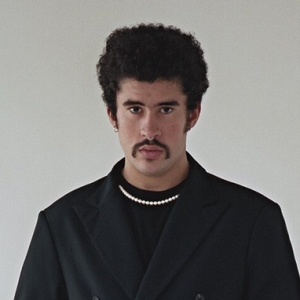Ska and Pop Fusion: Gwen Stefani’s Early Musical Influences That Shaped Her Iconic Sound
Gwen Stefani is undeniably one of the most influential voices in modern pop music, known for her fearless style and unique blend of genres. But before she was a global superstar, Stefani’s musical roots were deeply embedded in a vibrant mix of ska, reggae, and new wave sounds that defined her early career and helped shape her signature style. Today, we're diving into the fascinating world of Ska and Pop Fusion—exploring how these early influences fueled Gwen’s creative fire and set the stage for her meteoric rise.
From Long Beach to the Ska Scene: Gwen’s Starting Point
Let’s rewind to the 1980s—an era that was musical gold, brimming with eclectic genres and vibrant subcultures. Gwen Stefani, growing up in Long Beach, California, found herself captivated by the buzzing energy of ska and reggae. These genres weren’t just background noise; they represented a movement and a lifestyle that resonated deeply with her youthful spirit.
Ska, with its offbeat rhythms and brass-heavy arrangements, originally emerged from Jamaica in the late 1950s but exploded in popularity in the U.S. during the ’80s and ’90s, especially with the “third wave” ska movement gaining traction in California. Gwen reportedly soaked up these sounds and rhythmic patterns during her formative years, making ska a foundational influence before she ever stepped into the spotlight.
The No Doubt Era: Ska Meets Pop
Fast forward to the early ‘90s—a time when Gwen Stefani burst onto the scene as the lead vocalist of No Doubt, a band respected for blending punk energy with ska’s upbeat tempo. No Doubt’s early albums, especially their breakthrough 1995 record Tragic Kingdom, became a cultural phenomenon. The album’s fusion of ska-punk grooves with catchy pop hooks gave the band and Gwen an instantly recognizable sound.
Songs like “Spiderwebs” and “Just a Girl” are classic examples of Gwen’s ska-infused pop style, featuring driving brass sections, offbeat guitar chops, and her unmistakable vocal delivery—both playful and powerful. This fusion didn’t just set No Doubt apart from their contemporaries; it helped bring ska's once-underground sound firmly into mainstream pop culture.
Reggae’s Swag: Adding Flavor to the Fusion
While ska was the foundation, reggae’s soulful vibes and rhythmic bass lines also played a significant role in shaping Gavin Stefani’s musical tastes. Reggae’s laid-back groove and emphasis on rhythm introduced a different mood and depth to her music, often seen in No Doubt’s more mellow tracks like “Don’t Speak,” which combines heartfelt pop lyricism with subtle reggae undertones.
This reggae influence followed Gwen into her solo career as she continued to experiment with blending genres. Tracks like “Hollaback Girl” feature diverse rhythms and playful vocal styling that nod to her varied musical upbringing. The reggae-skewed syncopation and emphasis on groove have helped Gwen maintain a distinct edge that keeps her music fresh and vibrant.
New Wave: The Edgy Layer in Gwen’s Sound
One can't talk about Gwen Stefani’s early influences without touching on new wave—a genre characterized by its synth-heavy, edgy sound paired with punk attitude and artistic flair. Stefani’s attraction to new wave is no surprise, given its prominence in the ‘80s music scene she grew up in. Bands like The Cars, Blondie, and Talking Heads gave her a blueprint on how to combine catchy melodies with style and substance.
New wave's influence is evident in Gwen’s fashion-forward, bold visual persona and the experimental aspects of her music. Her vocal inflections, use of electronic elements, and the theatricality of her performances all owe a nod to new wave’s groundbreaking aesthetics. This blend of ska, reggae, and new wave culminated in Gwen developing an unmistakable style, merging danceable beats with edgy, stylish flair.
How These Genres Shaped Gwen’s Career Trajectory
Stefani’s skill with fusing ska, pop, reggae, and new wave set her apart early on and cemented her status as a genre-bender in an era hungry for innovation. Her fearless embrace of eclectic sounds empowered a new generation of artists to break free from genre constraints—and that trend continues today.
By grounding her music deeply in these influences, Stefani created a timeless sound. Even as she transitioned into a solo career focusing more on pop and dance, the echoes of ska and reggae rhythms lingered, reminding fans that her roots run deep.
Why Ska and Pop Fusion Still Matter
In today’s music world, where genre blending is practically the norm, it’s easy to forget how revolutionary Gwen Stefani’s early fusion of ska and pop was. For fans of her music and the broader American ska scene, understanding this fusion offers a richer appreciation of her artistry.
Moreover, as ska and reggae experience renewed interest—with new wave’s legacy still influencing pop culture—Gwen’s early work stands as a testament to the power of musical diversity. Her career is proof that tapping into underground and less commercial genres can lead to groundbreaking success.
Final Thoughts: The Legacy of Gwen’s Early Influences
Gwen Stefani’s early musical landscape was a melting pot of vibrant energy, infectious grooves, and innovative sounds. From the infectious rhythms of ska, the cool swagger of reggae, to the innovative edge of new wave—these genres didn’t just influence her sound; they helped craft an icon.
For fans and music lovers keen on exploring the roots of modern pop fusion, Gwen’s journey is an inspiring story of how embracing diverse influences can fuel creativity and chart new paths in music.
Keep an eye on how these genres continue to intersect in today’s hits—because as Gwen showed us, the future of pop is firmly rooted in the past’s vibrant sounds.
By koalafriend
Your trusted source for the freshest beats & behind-the-scenes music insights

